School Leadership 2.0
A Network Connecting School Leaders From Around The Globe
Golden Age of Schooling?
Golden Age of Schooling?
Writers have often described certain decades in a nation's history as a "golden age" such as the "Golden Age of Ancient Athens" and, later of "Ancient Rome" (see here and here). What about America? Has the U.S. had a "golden age?" Some writers have claimed that the post-World War II decades of the 1950s through the early 1970s were a "golden age" (see here and here). These were the years when Americans found jobs in an expanding economy, started families, bought small homes in blossoming suburbs and sent their sons and daughters to spanking-new schools. The federal government spent money on World War II veterans' education, making home mortgages affordable, and building the nation's interstate highway system. This massive spending sparked and sustained an economic boom through the 1950s and 1960s. It was a time when a man who had an eighth grade education and a steady job could buy a car, a small home for his family, and take them on a vacation. 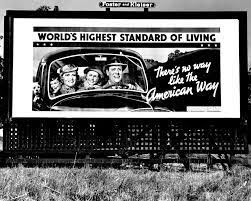 A billboard from the 1950s 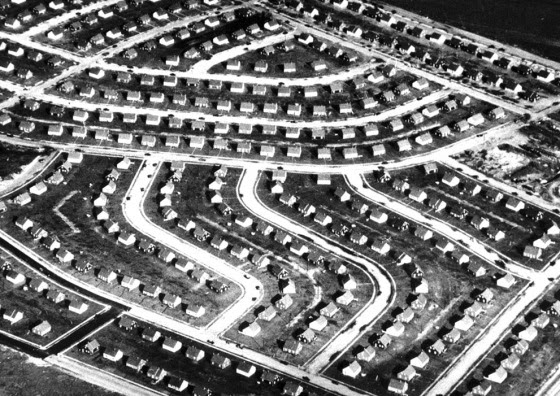 Tract homes became available to Americans in the 1950s  Typical school built in the 1950s And there are writers who have claimed that these years were also a "golden age" for U.S. education. Colleges expanded dramatically as high school graduation rates increased and dropout rates decreased in these decades. The quest for higher education opened portals to higher-salaried jobs and careers. HIGH SCHOOL GRADUATION RATES RISE Not until the 1930s, did getting a high school diploma seem within reach of most U.S. teenagers. Until then, most dropped out. By 1940, about 40 percent of high schoolers graduated. And a decade later, just over half of high school students completed high school. The percentage climbed to 84 percent in 2000 and two decades later it was 91 percent (see here). DROPOUT RATE DROPS In 1960, just over one in four high school students had dropped out. A decade later that number had fallen to 15 percent. (see here). In 2019, the rate was 5 percent. COLLEGE ATTENDANCE INCREASES: About 30 percent of American students attended college in 1950. That percentage increased to 52 by 1970 (see here and here). In 2019, two out of three high school graduates entered college. Yes, Americans went to school in droves during these years. The numbers testify to expanded and extended schooling. But was it a "golden age" for all students? Not for African American children and youth who were forced by law until 1954 and by iron-clad custom to attend separate and inadequate schools throughout Southern, Midwestern, and Western states in following decades. Nor for Latino boys and girls required to attend segregated schools in Southwestern states. What was it like to go to school in these years? Some classroom photos offer clues.  The girl in the lower-left of the photo tells you that the photo is posed. A scene from the all black Thomy Lafon School in New Orleans (Photo by Robert W. Kelley//Time Life Pictures/Getty Images) 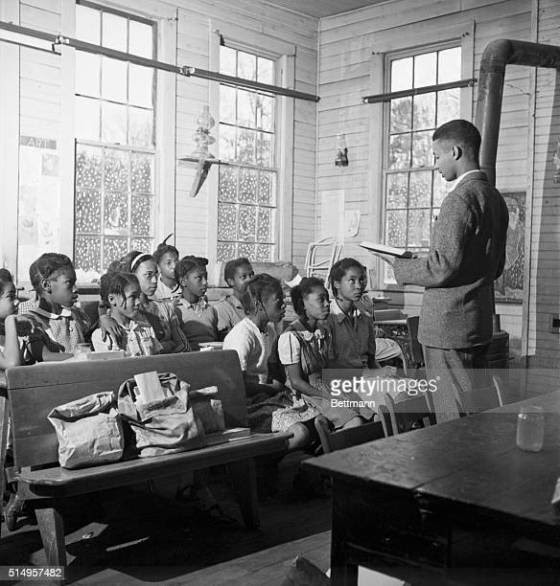 (Original Caption) 2/2/1947-Uno,Virginia- Teacher Jackson is reading to his pupils here. All of them were born in Uno and come from ten families that make up the entire population of the village. White children go to school at nearby Orange.  Upper-grade elementary school classroom, 1950s 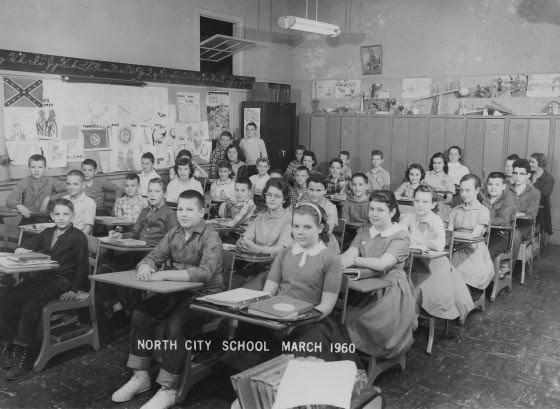 Athens, Tennessee Junior High School, 1959-1960 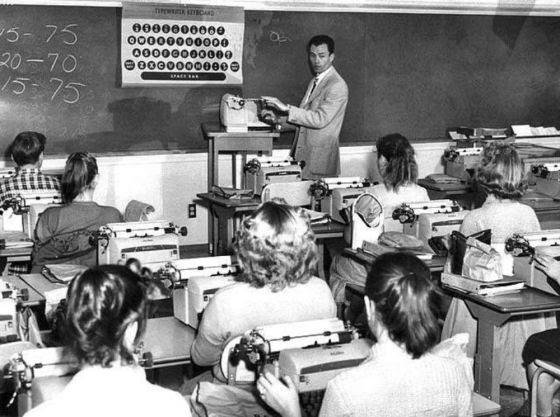 High School typing class, 1950s Viewers can tell that many of these photos were posed. Nonetheless, student and teacher clothes, hair styles, furniture arrangements, and segregated schools in these decades illustrate what some classrooms looked like in the 1950s. What about classrooms in the 1970s? A sampling follows:  An elementary school teacher in Cambridge (MA) sits among students and reviews lesson, 1972 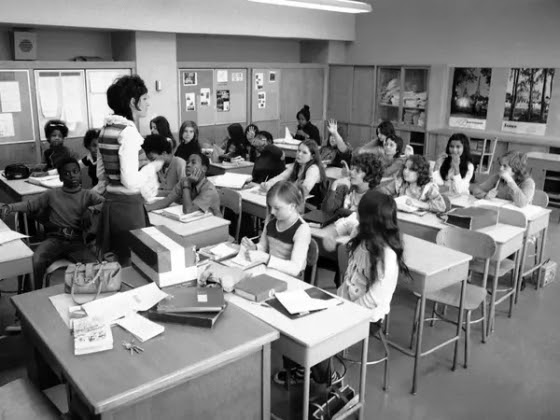 Children get instructions from teacher Barbara Friend during seventh grade French class at Junior High School 211 in the Canarsie section of Brooklyn, New York, in 1972. 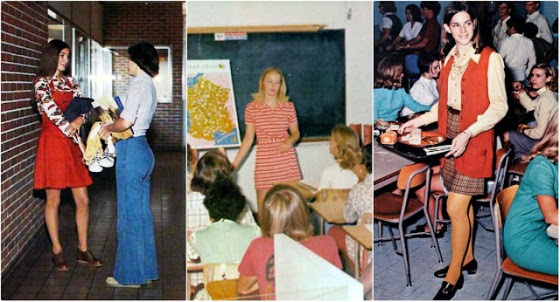 Snapshots of high school life in the 1970s  High school class watching televised educational program, 1970s All of these classroom photos from the 1950s to the 1970s suggest common furniture arrangements, shifting fashions in clothes and hair styles but continuing teacher centrality. There were, of course, exceptions to these arrangements in these decades.  Gifted children at President Avenue Elementary School in Los Angeles, California, work with small computers, rabbit skeletons, and microscopes in 1973. 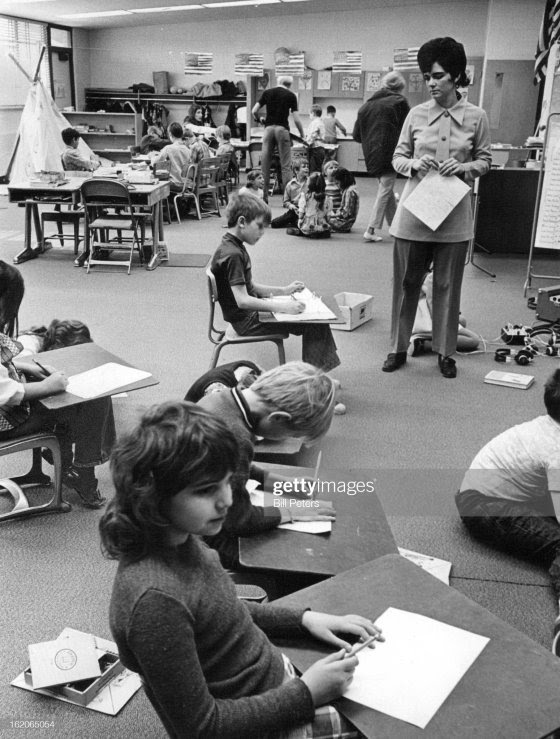 FEB 23 1973, Varied Activities hold attention of Children in Open Space Classroom; Teacher standing here in classroom at Dupont Elementary School in Denver (CO) area is Mrs. Susan Leigh.; (Photo By Bill Peters/The Denver Post via Getty Images) A Golden Age of Schooling in the 1950s through the 1970s? Maybe to some looking back through the hazy mist of time and maybe to those who need to believe in the past being far better than the present. Or maybe not. |
JOIN SL 2.0
SUBSCRIBE TO
SCHOOL LEADERSHIP 2.0
Feedspot named School Leadership 2.0 one of the "Top 25 Educational Leadership Blogs"
"School Leadership 2.0 is the premier virtual learning community for school leaders from around the globe."
---------------------------
Our community is a subscription-based paid service ($19.95/year or only $1.99 per month for a trial membership) that will provide school leaders with outstanding resources. Learn more about membership to this service by clicking one of our links below.
Click HERE to subscribe as an individual.
Click HERE to learn about group membership (i.e., association, leadership teams)
__________________
CREATE AN EMPLOYER PROFILE AND GET JOB ALERTS AT
SCHOOLLEADERSHIPJOBS.COM
New Partnership
Mentors.net - a Professional Development Resource
Mentors.net was founded in 1995 as a professional development resource for school administrators leading new teacher induction programs. It soon evolved into a destination where both new and student teachers could reflect on their teaching experiences. Now, nearly thirty years later, Mentors.net has taken on a new direction—serving as a platform for beginning teachers, preservice educators, and
other professionals to share their insights and experiences from the early years of teaching, with a focus on integrating artificial intelligence. We invite you to contribute by sharing your experiences in the form of a journal article, story, reflection, or timely tips, especially on how you incorporate AI into your teaching
practice. Submissions may range from a 500-word personal reflection to a 2,000-word article with formal citations.
You need to be a member of School Leadership 2.0 to add comments!
Join School Leadership 2.0